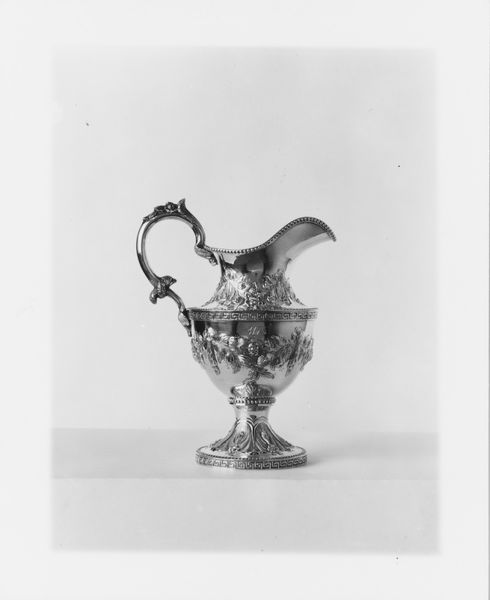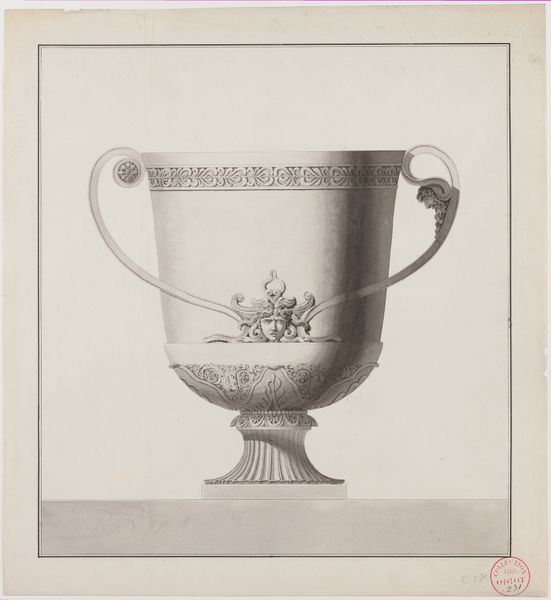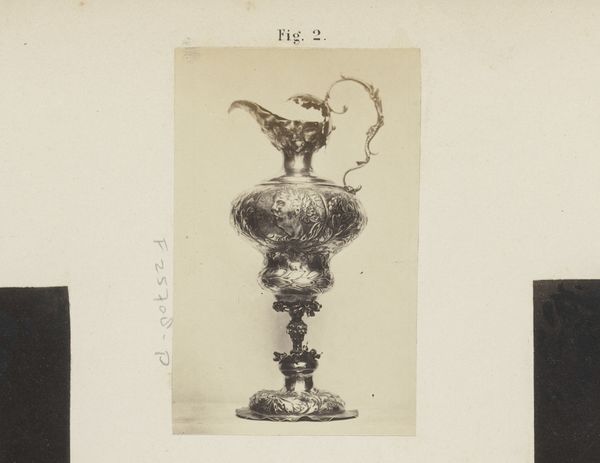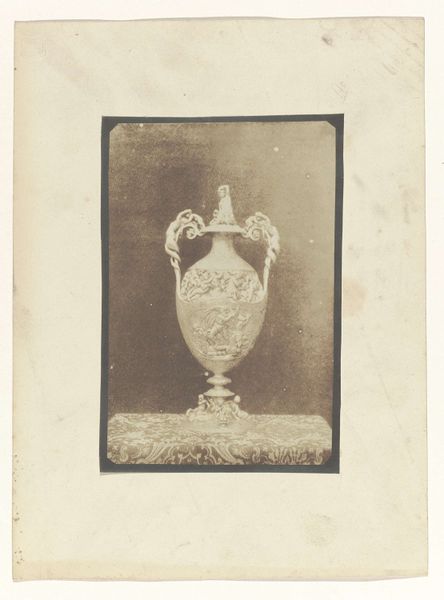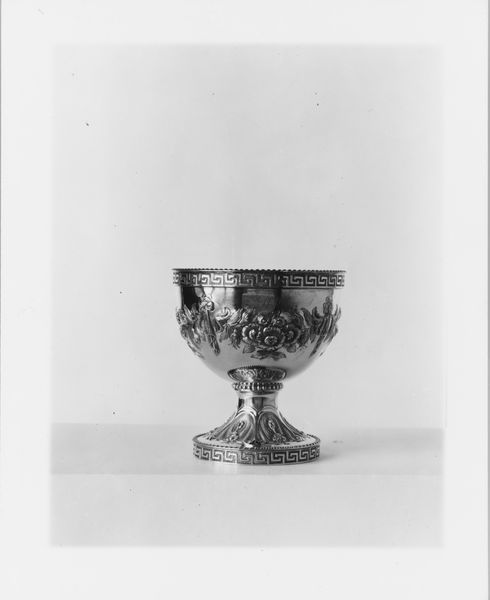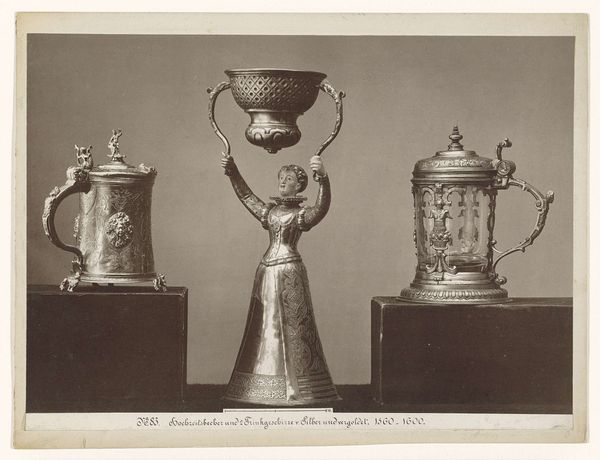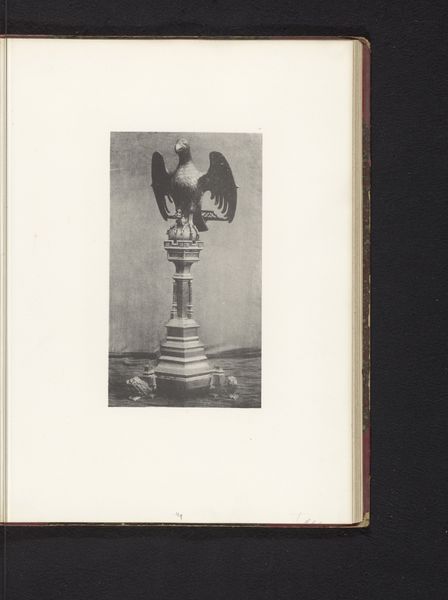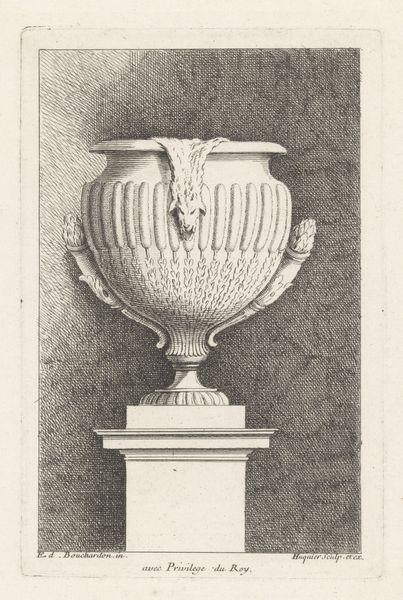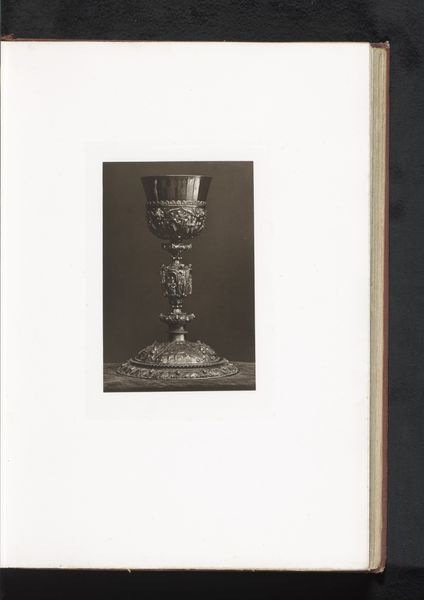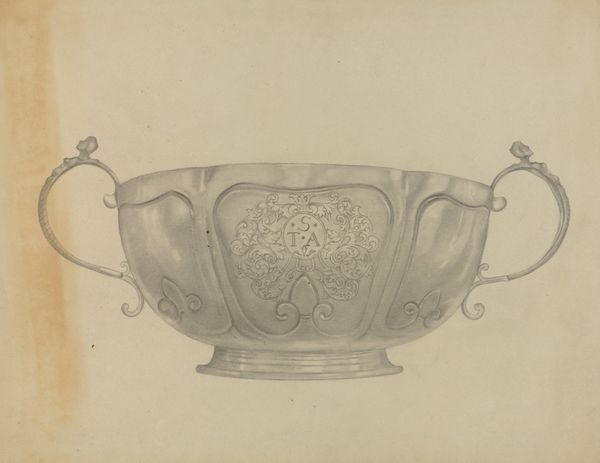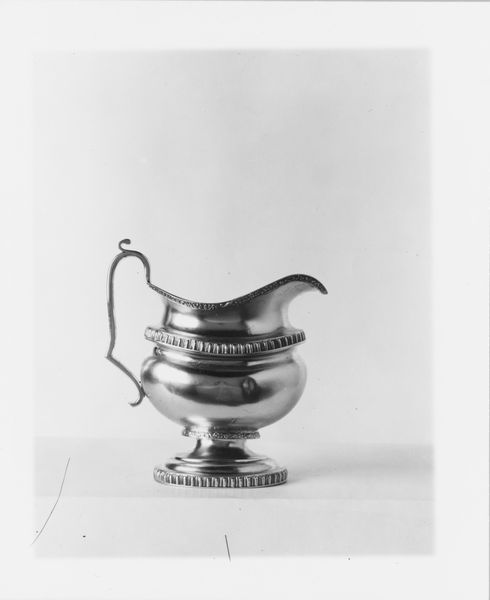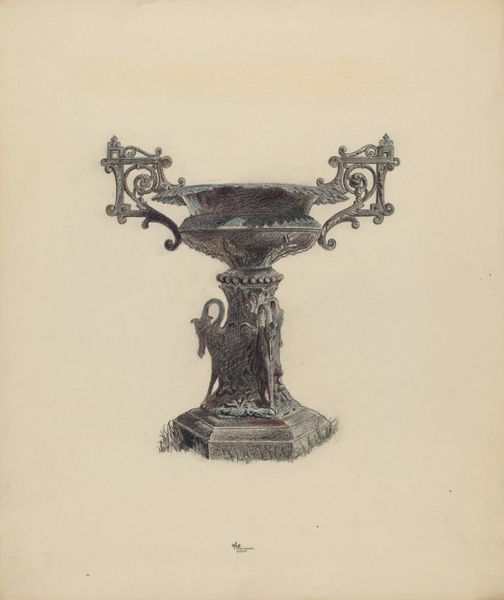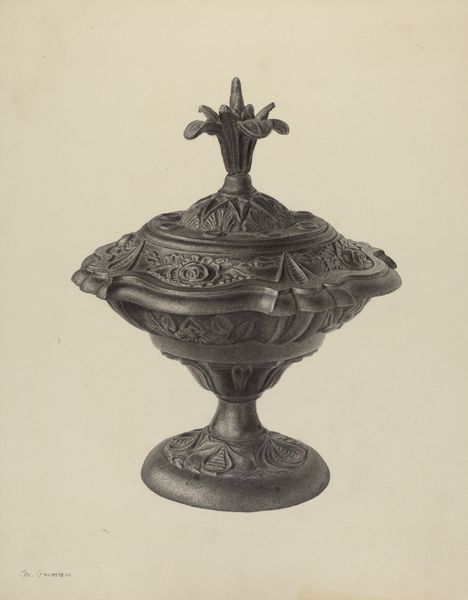
silver, metal, photography
#
still-life-photography
#
silver
#
metal
#
archive photography
#
photography
#
historical photography
Dimensions: height 230 mm, width 210 mm
Copyright: Rijks Museum: Open Domain
Curator: Here we have a striking still-life photograph by Charles Clifford, likely taken between 1850 and 1863. It depicts an ornate goblet, a “Beker met gevleugelde draak en roofvogel,” crafted from silver and other metals. Editor: My first thought is the dramatic contrast! The goblet seems to float against the dark background, all sharp angles and meticulous detailing, emphasizing the play of light on the metallic surface. Curator: Indeed. Note how Clifford masterfully uses light and shadow to articulate the goblet’s complex form. The interplay between the smooth, reflective surfaces and the intricate sculptural details, like the dragon and raptor motifs, creates a fascinating visual texture. It invites the eye to dance across its surface. Editor: Speaking of which, that peculiar dragon handle looks like something from a Renaissance prince’s cabinet of curiosities. I'm interested in the statement such objects made when depicted in early photographs. Was it simply documenting craftsmanship, or subtly aligning the owner, or commissioner of the work with grand historical narratives? Curator: It is impossible to be sure, of course, but the photograph speaks, undoubtedly, to the rising prominence of photography within the applied arts and how still life was deployed to assert the value of everyday items. The piece balances a celebration of opulent objects with the rise of a bourgeoise culture in love with possessions. Editor: Do you think that duality can explain why these luxury objects were favored subjects for early photography? Because it seems that many photographs celebrated the same symbols of wealth and taste while ostensibly democratizing art appreciation. Curator: I believe that is likely correct. By immortalizing such luxurious items in a new medium, they acquired another kind of social relevance that went beyond mere functionality and aesthetic pleasure, though not against it. What else strikes you? Editor: The choice to present it as a photograph emphasizes realism but then stylizes it using this almost theatrical spotlight. It creates a tangible object that borders fantasy and underscores its worth as an emblem of the owner’s, and perhaps society's, imagination. Curator: Precisely. Clifford’s photograph operates as both record and symbolic performance. I’ve found this piece particularly instructive for considering photography’s complex role within society, and its influence on art historical practice, during this period. Editor: Yes, a study in contrasts, offering a surprisingly nuanced glimpse into how early photography navigated the world of art and commerce.
Comments
No comments
Be the first to comment and join the conversation on the ultimate creative platform.
